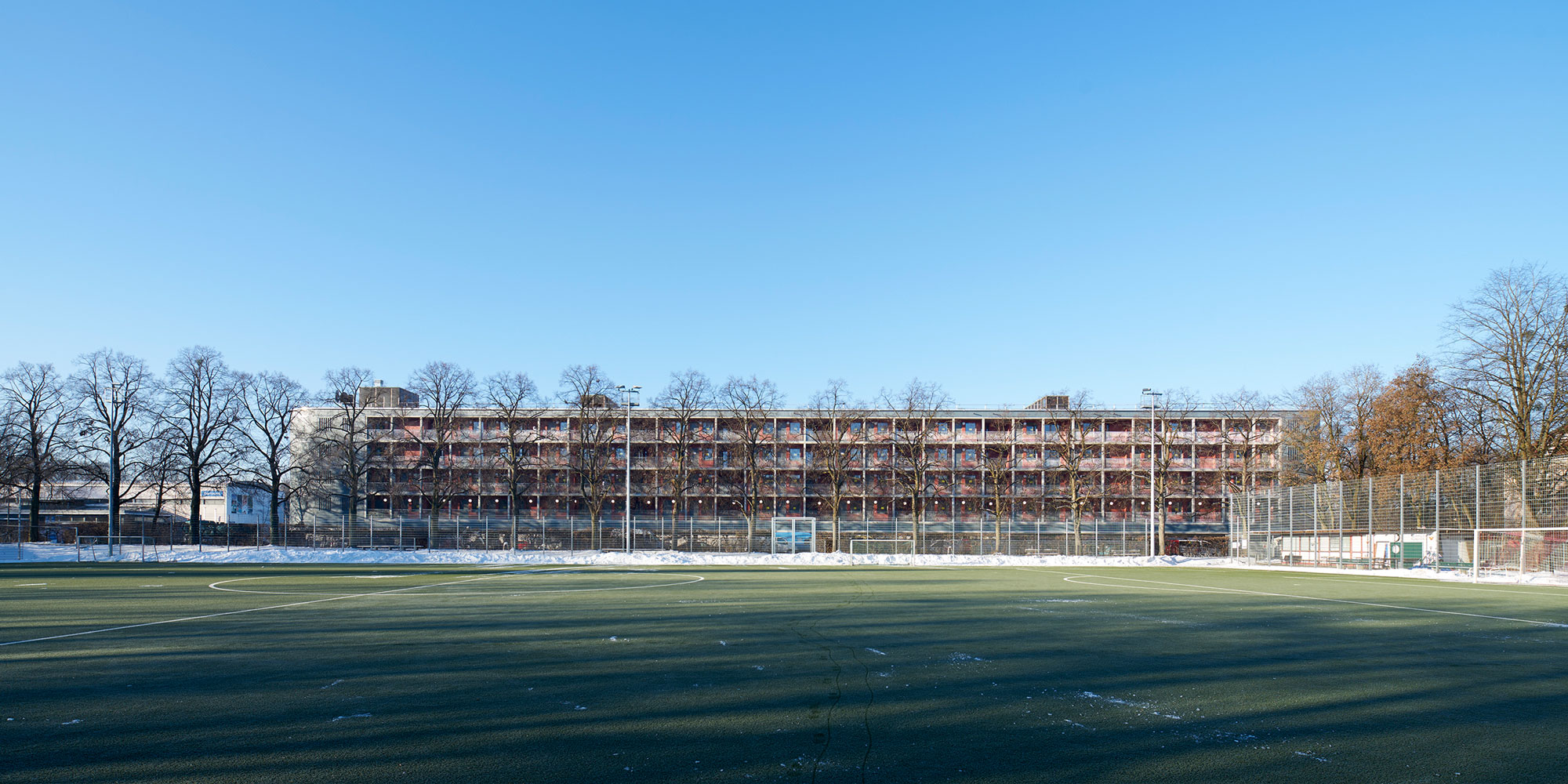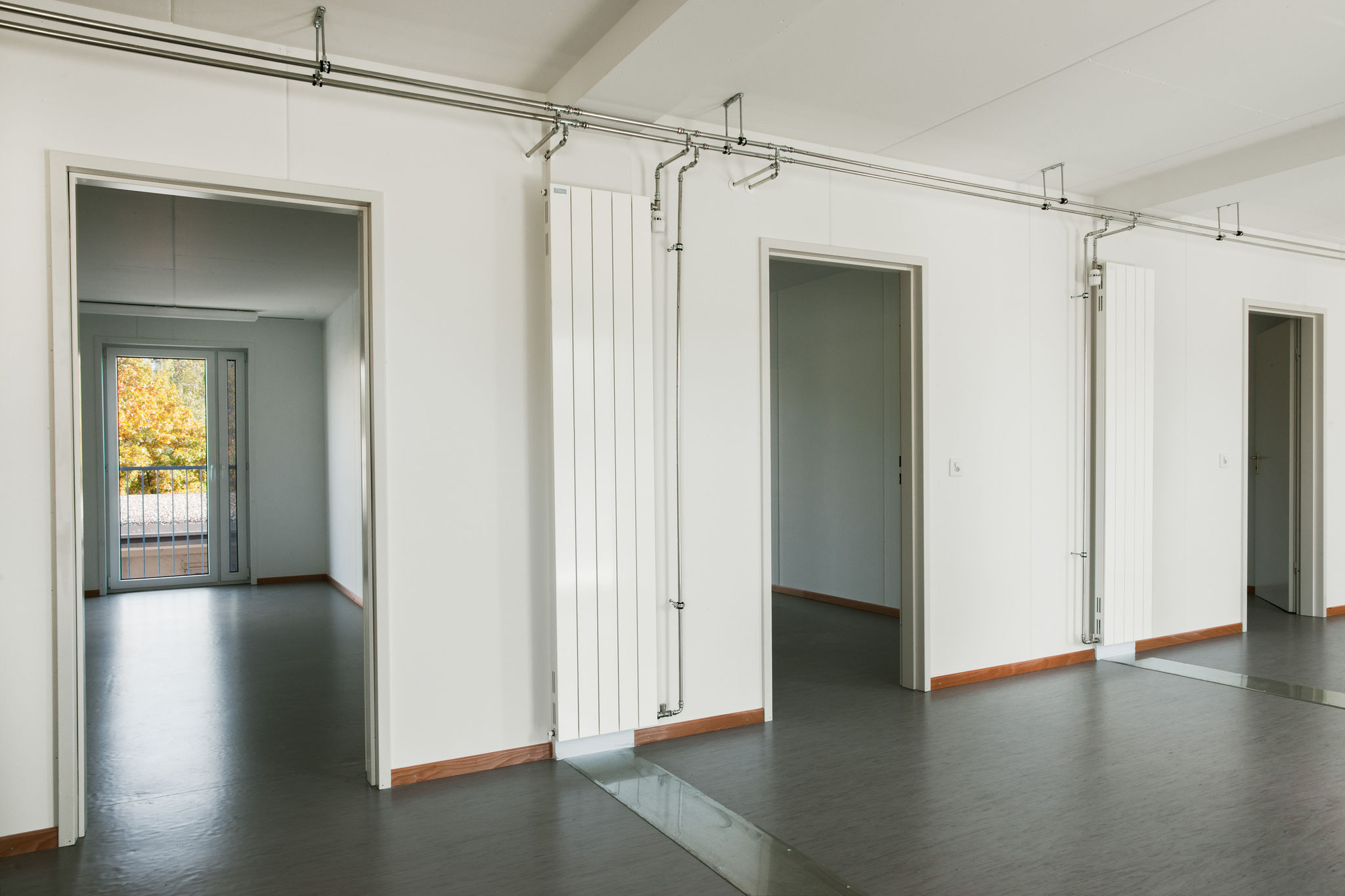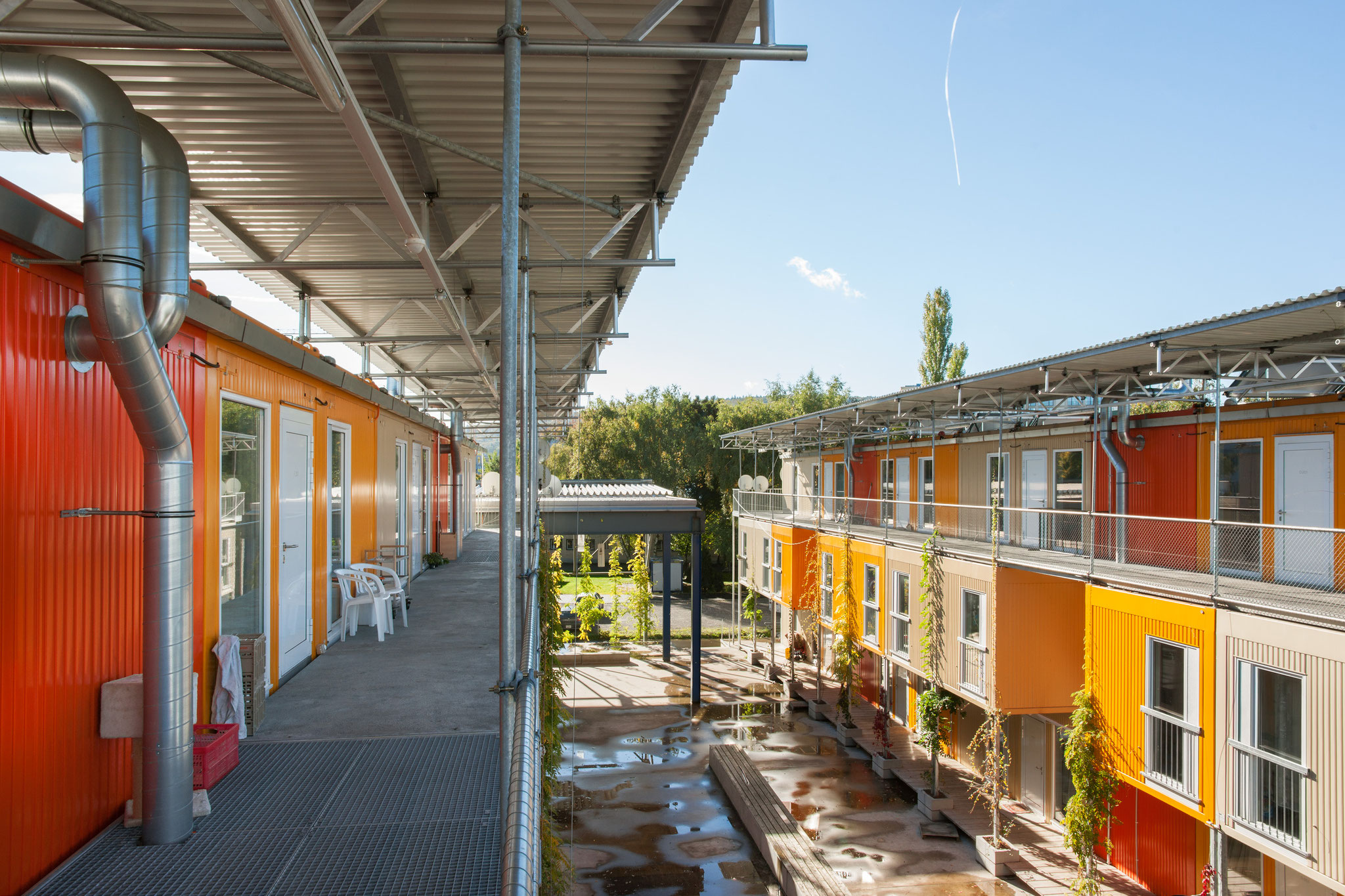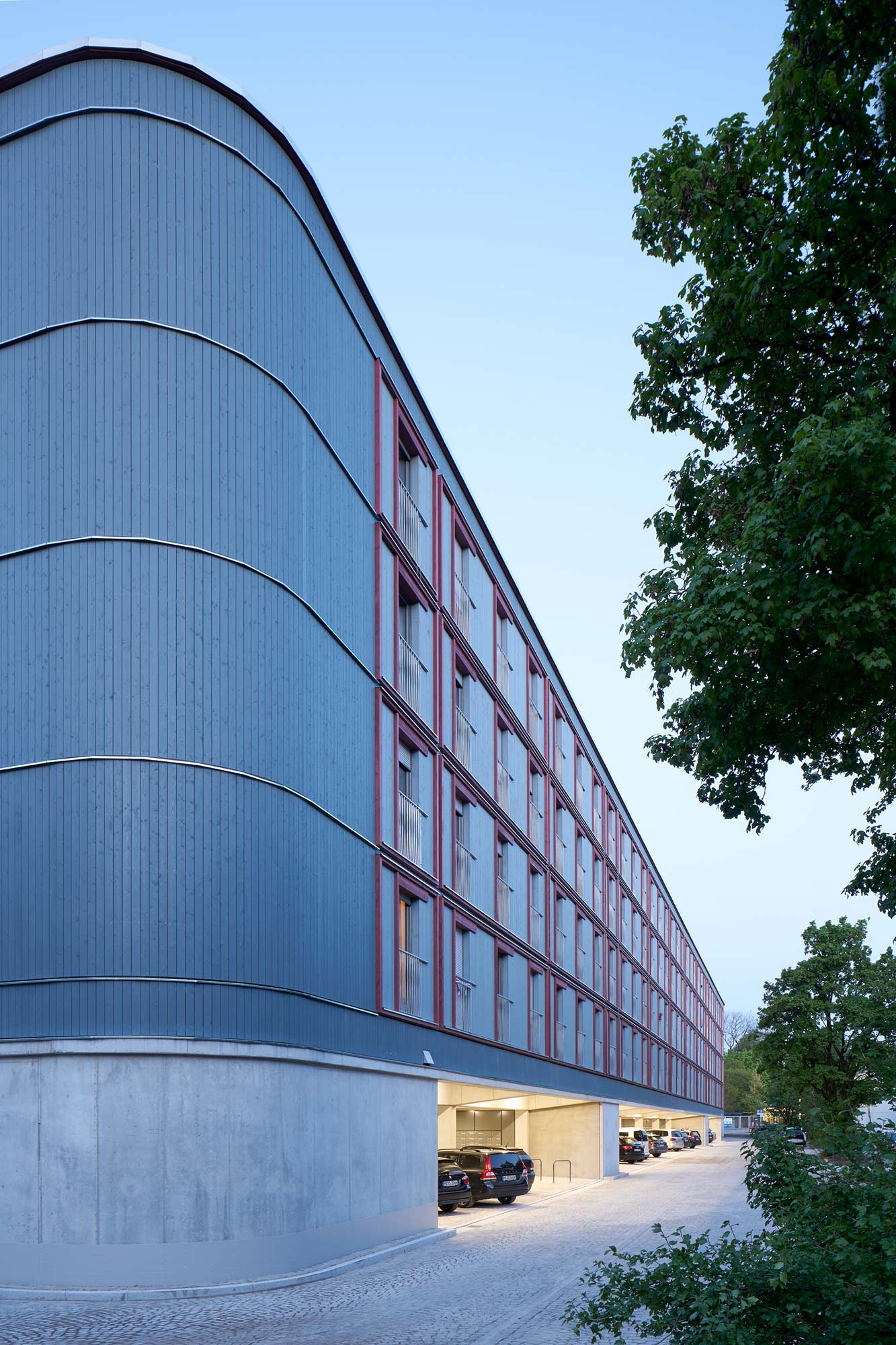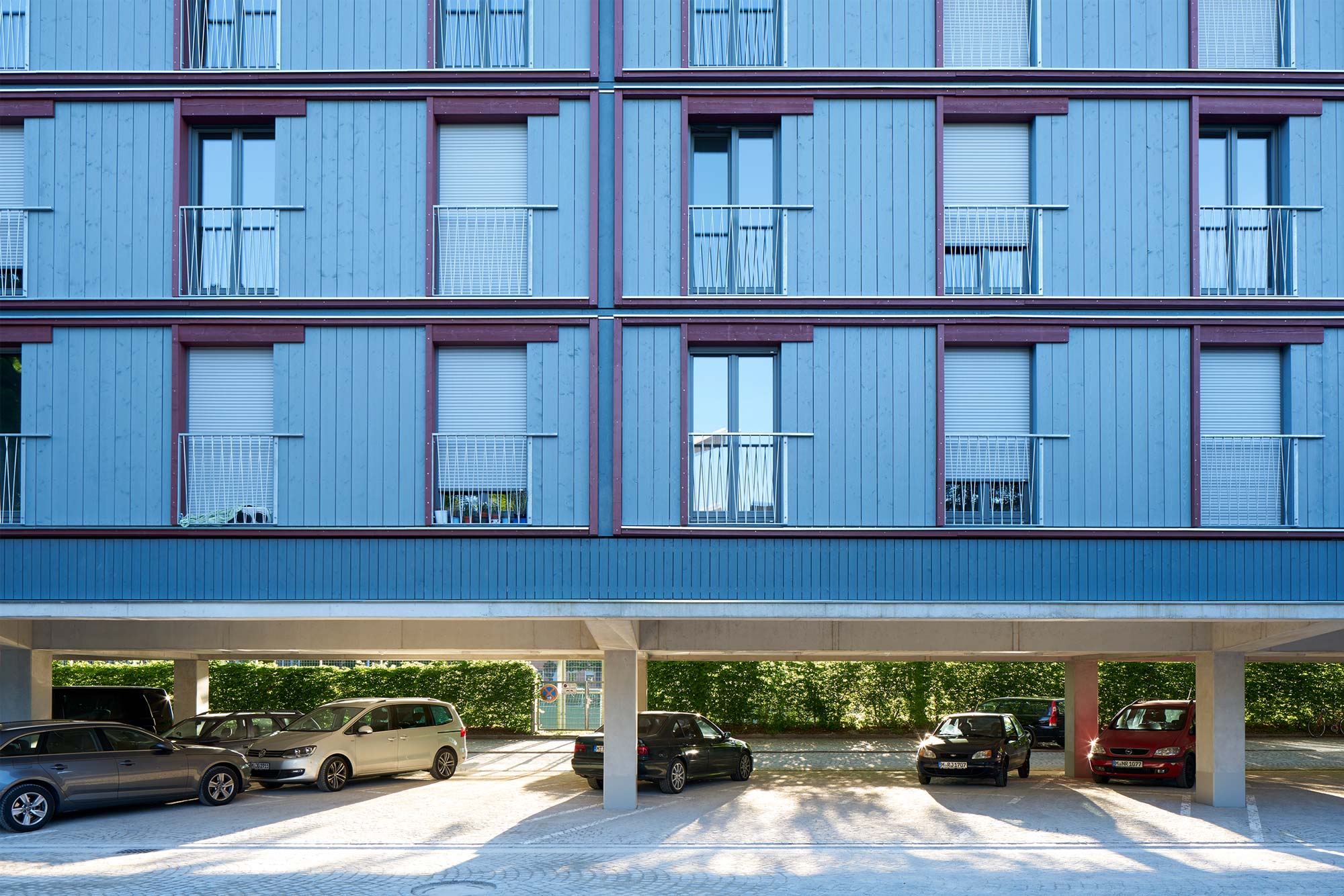Nicole Gutschalk • 24.04.2018
New homeland – or how architecture creates integration for refugees
Architects and town planners can make a major contribution with regard to the integration of refugees. It’s obvious that container settlements, which are established on the outskirts of towns, do not always provide the best solutions. What architectural efforts are being made to facilitate the arrival of immigrants in our society? Taking stock.
They are usually situated hidden away in industrial areas, concealed behind waste disposal sites or next to noisy motorway entrances: Refugee accommodation. Pushed away to the edge of town, where no one will notice them and there won’t be any problems with the neighbours. People who have fled from Afghanistan, Eritrea, Somalia, Guinea and other trouble spots, who find a new home made of steel in the accommodation containers. Containers, which are actually intended for storage and transporting commodities. And not to accommodate people because they are not without problems from the perspective of the indoor environment: there is frequently condensation, the humidity is often high, mould is likely to form – just to mention only a few of the difficulties that occur with containers.
The fact that a majority of refugees in this country are accommodated in container settlements is connected with the fact that such settlements can be planned cheaply and established quickly. However, the inhabitants and observers have a feeling of no sense of place. And anonymity. «This stigmatising visibility of refugee accommodation makes it even more difficult for immigrants when they arrive», says Bence Komlósi, architect and co-founder of the Architecture for Refugees SCHWEIZ association. «There is an urgent need for more diversity regarding accommodation – either through integrative architecture for refugees, which provides sufficient space for life in a community and through the selection of the location in an environment with an embedded neighbourhood». It’s actually logical because how is integration to work if there is no contact with «locals»?
Use synergies
Synergies between user groups of different types and refugees can easily arise, as shown by the Zurich basic camp on Aargauerstrasse. Although the centre itself is also situated on the edge of the city in a peripheral location – between motorway feeders and railway tracks – however at least at this site a few town planning features were included in the plans from the outset: Green areas as well as social infrastructure were planned together with space for local businesses. In the meantime approximately 200 people from the world of art and culture encounter 120 asylum seekers in the container settlement on three floors. The artists walk past the asylum containers when they want to go from their studios to the «Zum Transit» eatery. In other words: People meet each other. Although one rarely sees refugees sitting at the tables in the eatery, but at least a few of them were able to find a permanent job there after they had received their work permits.
Courage is beneficial
The fact that there are now unconventional approaches to accommodation for asylum-seekers – above all when politicians, builders, town planners and architects pull together – is shown by a recently completed building project at our German neighbour in the middle of a tranquil and well-situated urban district in Munich, «Wohnen am Dantebad». As you can imagine, the planned building project was not without protests and criticism on the part of the residents. However, when it became clear that the parking spaces on the area being built on – sacred sites in German towns – would not have to be relinquished for the planned building work, the protest quickly faded away. This is because the special feature of the building in the Gern district of Munich is that it was built on stilts. Or put another way: There was no building on the parking spaces, but above them. No land had to be made available for the building itself, saving an enormous amount of money. In the four-storey building, which was completed by the local architect Florian Nagler, 100 apartments could be created within an astonishing six months. Half of the apartments went to refugees, 50 percent of the apartments to female tenants. In addition, 14 family apartments were integrated. Florian Nagler and his team also thought about meeting places. For example many communal areas have a «washing café» and a roof terrace that is accessible to everyone high above the trees of Munich, providing space for animated exchanges. Affordable, flexible living space is therefore actually possible – even in cities such as Munich, where property is extremely scarce and expensive, comparable to the Swiss cities of Zurich or Geneva.
Looking into the future
If one looks for similarly courageous projects in this country, then unfortunately one is left with the impression that we are being rather hesitant in dealing with question of HOW and WHERE as far as accommodation for asylum-seekers is concerned. «Although the right to accommodation fit for human beings is a basic right, the Federal Government does not give the Cantons and municipalities – who in the final analysis are responsible for accommodating recognised refugees – any binding guidelines», says Richard Zemp from the Typology & Planning in Architecture (CCTP) centre of competence at Lucerne University of Applied Sciences and Arts. The subject of refugees seems to remain a hot potato at a political level, where people are reluctant to burn their fingers. It’s therefore preferable to sell voters solutions on a pro rata basis. In other words: Transitional solutions for a framework limited in time in a location as far away from the centre as possible. The city of Basel has taken this to extremes by establishing its reception centre for arrivals seeking asylum very close to Bässlergut prison, not far from the German border. An act with symbolic significance! Many people might notice at this point that refugees are anyway only accommodated in asylum-seeker accommodation for a short period of time and therefore think this is reasonable. However, it unfortunately only corresponds to the truth to a certain extent. This is because in reality many asylum-seekers remain in such temporary centres for longer than planned. Some have even had children in the meantime.
Permanent instead of temporary
«It would be an opportunity to deal with the subject of affordable homes in cities in principle using the example of accommodation for refugees,» says Bence Komlósi from Architecture for Refugees SCHWEIZ. «This is because in the final analysis it’s about a central weakness in local cities.» When looking at the statistics of the last few decades, it quickly becomes clear how much our society is undergoing change: In most major Swiss cities, single person households now represent the largest group. Patchwork families and a continually increasing number of elderly people also account for a large proportion of everyday life in our towns and cities. Therefore all the people from the middle of our society, who depend on affordable homes just as much as refugees with recognised status. And this is the case in the long term. «Town planners together with the responsible politicians need to deal with the development of districts in towns in a far-sighted approach» says Richard Zemp from the CCTP at Lucerne University of Applied Sciences and Arts. «Namely ask oneself in which urban zones positive development can be expected in the future and allow integrative residential projects for refugees to be established there.»
Intermixing instead of marginalisation
The planned building over the Geerenweg plot in Zurich’s Altstetten could become a beacon project for far-sighted urban development. At least that’s the hope. «A large number of young people and families found a home last year in District 9 – not least also because of the still affordable rents», says Steff Fischer from Fischer, an independent property company that is an external advisor for the project development of the Geerenweg plot. «One possible indicator for the fact that this part of the city might develop into a trendy area in the future.» On the site operated by Asylorganisation Zürich (AOZ) and the «Einfach Wohnen» Foundation on the one hand, living space is being created for 200 refugees and 70 young people in training. In addition, temporary buildings are planned – which will be created in stages – and affordable space will be made available for small businesses, young entrepreneurs and the artistic community. There will also be a playground, areas for leisure activities and urban gardening. «In other words somewhere similar to a village, which is intended to make it possible to meet people and engage in conversations», says Steff Fischer.
Integration is reciprocal
Village sounds good in any case. At least in line with an environment fit for human beings.
«If in the future as architects and town planners we want to think about the subject of integration, we should focus much more on creating smaller, scattered sites to promote social mixed development.»
says Richard Zemp from the CCTP at Lucerne University of Applied Sciences and Arts. «This means moving away from so-called «gated communities» in peripheral locations towards living together in residential districts.» Then one thing is certain: Only encounters create integration – and this is also to be regarded as a reciprocal process.
Photography: Martin Zeller, Florian Nagler Architekten
